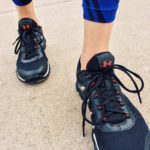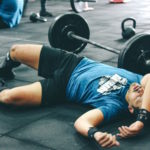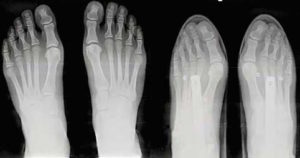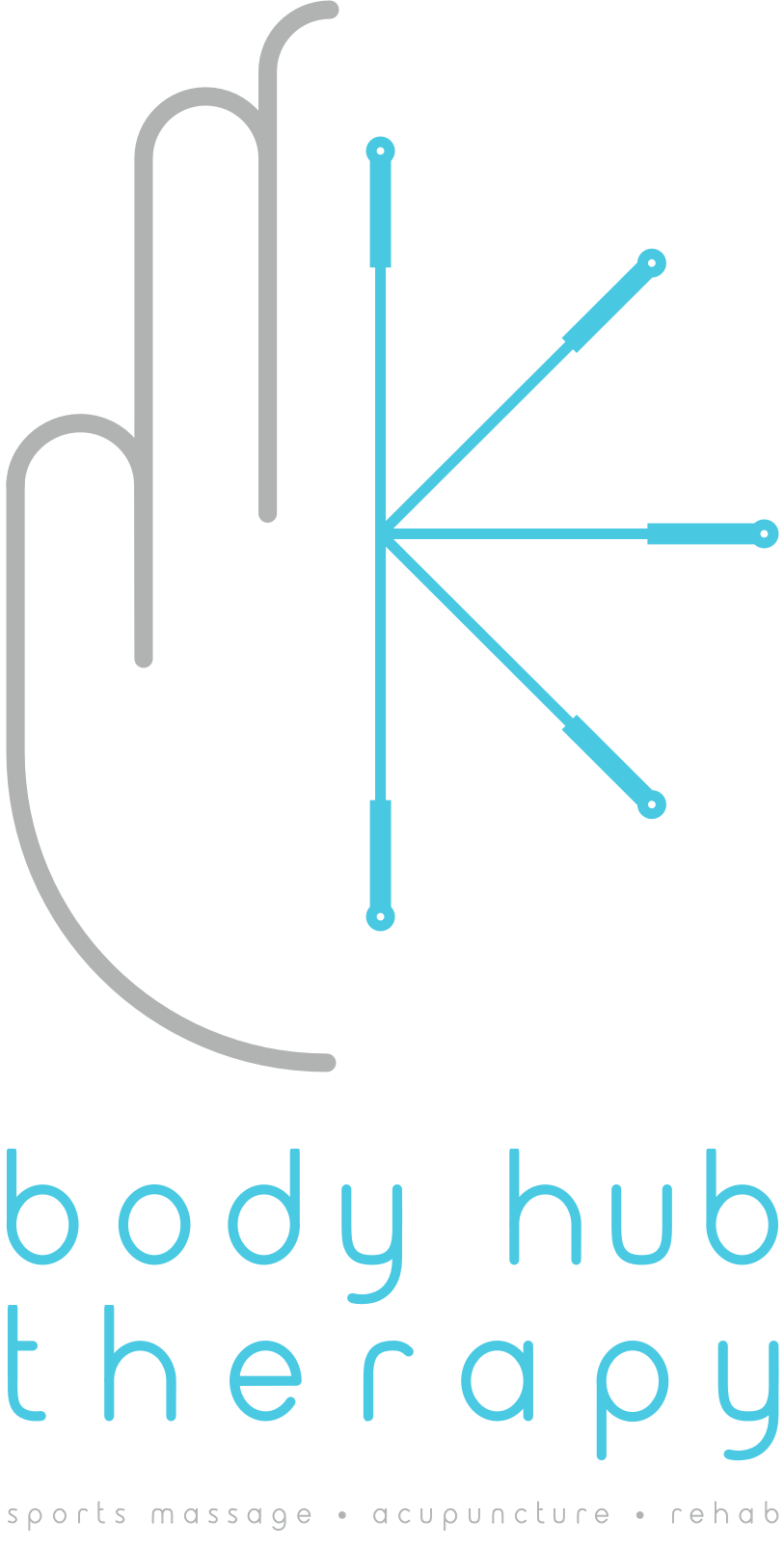
CBD and it’s role in the fitness industry
I think it's safe to say we all know the wonders of CBD when looking into mental health and the effects it has on reducing anxiety and improving mood, but is there a way that CBD can help you become a fitter and stronger person?
It might seem like Marijuana and health massively contradict each other but in this blog I will explain how CBD can be used post workout to aid recovery, as well as it's effects on preventing the break down of muscle mass.
What is CBD?
So if you don’t know already, CBD stands for Cannabidiol. There is no THC (tetrahydrocannabinol) present in CBD, so we will not be consuming any sort of psychoactive chemical.
How can it help me become fitter and stronger?
First things first, we need to understand how CBD interacts within our bodies. Everybody has an internal biological system formed by endocanniboids called the Endocanniboid system (ECS). We have two cannabinoid receptors throughout the body found in our cell membranes. These receptors can only be stimulated using CBD. The two receptors are CB1 and CB2. CB1 is found in the nervous system, connective tissues, gonads, glands, and organs; and CB2, predominantly found in the immune system. When we take CBD products there are interactions in all these areas.
So now we know the human biological basics, let's take a look at how CBD can affect us from a fitness perspective.
1) Pain relief
When used before a workout, CBD can be a powerful pain analgesic. Sometimes when we work until failure we know we cannot possibly do anything more. What if we were able to squeeze out a couple more reps or run just a little longer? This is possible with CBD as our pain sensitivity is decreased. We can therefore push harder.
2) Anti Catabolic
Catabolic hormones work by breaking down muscle tissue. In order to remain strong and injury free, we want to build healthy muscle and increase our muscle ratio so it is higher than our body fat mass. It is hard to build muscle because so many factors within the body are trying to stop the muscle from growing. One important catabolic hormone that you have most definitely heard of is cortisol (the stress hormone). Cortisol breaks down muscle tissue to supply the body with blood sugar. CBD reduces cortisol which in turn helps us grow stronger much much quicker!
3) Sleep
Sleep is imperative for muscle recovery. Without it, there is no way our muscles can recover from repetitive physical activity. CBD will help you sleep without any of the nasty addictive effects some sleep medications carry.
4) Natural Energy boost
We are all familiar with the side effects of caffeine such as anxiety, nervousness, hyper-awareness, jitters, headaches etc. CBD can deliver us that well needed energy boost without any side effects.
Intrigued? What next…
If learning about CBD and it's amazing benefits has inspired you to give it a try, you might be wondering how to take CBD. CBD can be used in the following ways:
Oil – Blended into oil to apply onto the skin. Something we will be adding to our treatment list soon.
Drops - Quick relief and taken as a drop under the tongue.
Capsules – Similar to a food supplement
Food and Drink – CBD can even be added to food for long lasting effects. Some café and restaurants are already serving cannabis infused food. Check out Farmacy, Yogland and Maison BAB .
Another important thing to take into account when you are actually purchasing your CBD product is to make sure you are buying a brand that uses pure hemp extract (the sativa strain) and cold pressed hemp oil. It should be organically grown and below 0.3 THC (that’s the legal amount). There are so many sellers of CBD products now it can sometimes feel overwhelming. When looking for your product just check for those aforementioned ingredients, as well as a product that is tested, certified, and clean. We recommend The Cure CBD for all your products.
‘We are very excited to announce that we now sell CBD products in our clinic. We also incorporate them it into your treatments (with your permission, obviously).‘
We would love to hear how you get on with your CBD journey! Get in touch, we love a good chat!
I will leave you with this fitting quote ‘ Let food be thy medicine and medicine be thy food. – Hippocrates.

Marathon must haves
Whether it is your first time running the London marathon or you are a bit of a pro, chances are you are really starting to feel the heat now. It’s getting close and your training is becoming structured.
If you have a coach, you are very lucky, they will be breaking it down for you and telling you exactly what to do. If you do not have a coach then listen carefully…no I am not a running coach, nor have I ever run a marathon, yet every single client I have treated in the run up to a marathon has smashed their personal best.
The reason for this was not how well they carb loaded on the day or what shoes they wore, it was down to not making these 3 crucial mistakes.
Upping mileage to quickly
Upping your mileage weekly is fundamental part training. You will have scheduled runs and miles to cover, don’t focus too much on pace, but try to focus on your heart rate and use it as a guide. Your heart rate should stay at 70 per cent max. Some days you will feel so great and want to add more miles to your run. DO NOT. Other days you will feel crappy and stop before your supposed to, just remember you can’t add these miles onto another run.
I cannot stress how important it is to stick to your training plan. Do not add miles.
Not strengthening
I see so many runners everyday that complain about a strange pain they are getting. This pain or niggle is the bodies way of saying something is out of sync. The majority of runners I see have poor hip flexibility and weak glute and core muscles. When you run, you are moving through one plane of motion known as the sagittal plan thus utilising the same group of muscles time and time again.
Try strengthening these areas and if the pain persists, book in a session with one of our professionals. They will assess your posture and tell you exactly why the pain is occurring and what you need to do to stop if coming back for good. You can book in with our Physiotherapist Alex here. He specialises in overuse injuries, such as those common to runners.
Common runners injuries are:
- Hip bursitis
- Knee bursitis
- ITB syndrome / runners knee
- Planter fasciitis
- Shin Pain
- Achilles pain
If you have pain that persists throughout a training run, don’t wait and see if it goes away because it won’t or it may come back with a vengeance on race day. Please listen to your body when it is trying to tell you something. Get that niggle looked at, it could just be a pesky muscle not that needs releasing. You can book in with our Physiotherapist Alex here. He specialises in overuse injuries, such as those common to runners.
Not resting and recovering wrong
Intensive training and continuous impact damages the muscles as exercise causes tiny microscopic tears in a muscle, which eventually rebuild themselves to grow back stronger. Because the muscle tears, it needs to recover. You should be taking at least 2 rest days a week during your training and on those rest days you should not be doing any exercise. All the mileage you are covering is pushing your muscles to their limits.
Desmond, a great client and friend of mine used to be a fell runner for 20 years and has run 7 Marathons. He ran the London marathon in 1985. He is a great example of what can happen when your body is pushed to its limits without adequate recovery and rehab protocols. He has a message for those running the marathon and anybody who likes to run as a hobby.
‘I learned the importance of strengthening and recovery too late in my running career and the constant pounding on my joints led to me having a full knee replacement. It was my own entire fault, knees are made to take our weight, they are extremely strong and complex joints but if they start hurting it’s a massive warning sign. If you are going to run hard, you have to recover harder. Don’t let something you love ruin you’
The body needs to condition itself for any event, but a marathon even more so due to its gruelling demands on the human body. Soo make sure you don’t make these mistakes and I promise you, you will fly across that finish line.

Therapist spotlight
For our first therapist spotlight, we talk to Andrew and find out what it's like to work as a Physiotherapist, why he loves this job and one really surprising dream career choice!
What made you want to become a Physiotherapist/ Sports Therapist?
I’m amazed by the human body. It is intricate and powerful, regenerative, protective and intelligent. More than half of the functions your body performs happen without you even needing to think about them, and the other half are abilities that are unique to human anatomy. My interest in the human body is what has ultimately lead me to a career in sports injury therapy.
Everyone has aches and pains but not everyone realises that they can often be treated quickly and easily to improve the overall outcome of the injury and more importantly they can prevent future injuries. I know that I can help people to better understand their own bodies and injuries. Furthermore, I can help them to understand what they can do to make themselves stronger and less likely to repeat injuries.
What would you be doing if you did not work in this industry?
Ultimately I would love to be a professional climber. I love top-rope climbing and bouldering so being paid to do that is the dream. After all, they do say that if you love what you do then you’ll never work a day in your life!
I am also a bit of a History nerd, I would love to have a career studying ancient Rome or the dark ages or something else equally nerdy. I find these topics fascinating, more often than not real history is stranger than fiction.
What can our clients expect from one of your sessions?
I can help you to understand what has caused or what is causing your pain or discomfort by assessing the condition of the joints, ligaments, muscles and tendons. By asking questions about how the injury or discomfort came about, what aggravates the injury as well as what relieves it, any past injuries you may have had and how they might have influenced subsequent injury.
Treatment is also a large part of each session with me. Mobilising joints, manipulating tissue and tensioning & sliding nerves, as well as releasing trigger points and providing friction therapy. All of these can be produce effective pain relief and improve the condition of joints and tissues.
Finally, I can advise, demonstrate and prescribe specific rehabilitation stretching and exercises programs that can help build muscles where there is weakness and relax tissue where there is tension.
When you are not treating clients, what would we find you doing in your spare time?
I spend a lot of my time at my local climbing wall, ‘The Arch’ in Bermondsey. I spend a lot of my free time either reading or climbing and I am also a pastoral care assistant at a secondary school in London.
If you had one day left on earth and had to take all your knowledge with you but you could leave one important piece of advice/message what would it be?
Easy. Don’t smoke & brush your teeth.
Book Andrew for a Physiotherapy session today. Use code BLOG for 10% OFF.

Gym newbie
Everyone was one a newbie in the gym. There once was a time that I wouldn't even enter the weights section without the fear that something would go horribly wrong. I didn't even know where to begin. I had no idea how to use a squat rack or even hold a dumbbell.
Even though I have been into fitness my whole life, most of my childhood and teen years were spent doing athletics, so when I stopped due to severe shin pain I was stuck on what to do next. I gained over a stone and started to become very unhealthy. I tend to get ill once a year but I became ill every couple off weeks, I was always bloated and my mood was all over the place.
Then, I joined the gym...
If you have been contemplating going to the gym and this year you are really considering it, I am telling you this is the best decision you will ever make. Don't be afraid, the first week will be daunting but everybody in the gym wants to see you succeed. I was dreading going, I didnt want anybody to look at me, especially not whilst trying to do some kind of movement where I was probably going to fall flat on my face! Anyway, after a few days people started to chat to me and say hi. Members were taking the time to train with me and teach me things I never thought I could do. Just because I was really strong from spriting it didn't mean I could just go in there and start lifting crazy weights. It is so important to learn techinque so that you are using the correct muscles. Once you have mastered the basics, its easy from there.
So if this is the year you decide to go for it, here are some tips to help you boss the gym!
1) Talk to a PT and take advantage of the taster session
Ask for help, that is what they are there for, they are not going to try and sell you sessions. Personal trainers will ask you once if you would like to buy sessions and that's that. It's not a binding contract. Dont buy them if you don't want them.
If you are looking for a PT, make sure you choose wisely. Most gyms have a section with all the personal trainers up on the wall. Don't just chose one based on what they look like, they may not specialise in what you are aiming for. Make sure before you meet with a PT you have a goal in mind. Do you want to be stronger? Do you just need motivation to get that little bit further with your training or maybe you just want fat loss. There is nothing more annoying for a PT than clients signing up that have no clear goal. If you have no goal, then why are you in the gym?
Make sure your goal is attainable and set yourself small goals that will eventually get you to your ultimate goal. Make sure everytime you reach a small goal you celebrate somehow!
2) Gym and diet work together
Now you have made it to the gym and are putting in all the hard work, be careful not to reverse this by eating badly and falling into the typical pattern of 'oh I can eat this now because I went to the gym'. That is going to get you nowhere. Eventually when you really start getting into the gym, you will no longer want to eat unhealthy anymore as you will start to feel amazing, your whole lifestyle will change and so will your food choices.
3) Meet like minded people and make gym friends
Never under estimate the power of a gym buddy. Having somebody to share your goals and gym experiences with is something that could be be difference between you reaching your goals and giving up. You don't have to train with them all the time or even train with them at all. You can share recipies, tips and pictures. It's all about motivation.
4) Do not dress to impress
If you want to fit in at the gym and reduce the risk of people starting at you, which is one the the top fears when it comes to gym members, then make sure you dress like others. There are some seriously lovely gym clothes out there so buy yourself a nice pair of gym leggings and a vest and keep them low key, then when you get more confident you can bring out the bright and bold patterns. Go wild, you have worked hard for your results and you gotta enjoy how they are now making you feel!
5) Don't just take
If something is lying on the gym floor and you want to use it, it's possible somebody is doing a circuit with a couple of pieces of equipment so they may be using it. Always ask somebody around you if anybody is using it. It's not nice to steal.
6) Take a towel
As you are new, it's pretty obvious things are going to get a bit hot and sweaty. Use your towel on the seat of the machine as well as on the matts you lie on and try to wipe down a machine once you have used it.
There is nothing more disgusting then jumping onto a machine that is drowning in sweat.
7) Don't you dare give up!!!
Otherwise what's the point of going in the first place? You finally got the courage to get yourself there and learn the basics...and then you quit. All this means is that you have to start all over again next January. That's madness! Think how much progress you can make in one year. I look forward to meeting the healthier and stronger you.

Don’t let the cold win
Bloody hell it is freezing!! How many times have you said that already in the last few weeks? Your heating is now officially on and getting out of bed is ten times harder!
Did you know that research shows that in the winter months the percentage of sprains and strains increases due to cold muscles, tendons and ligaments? So I have put together some helpful tips to stop you becoming part of that unfortunate percentage.
Always warm up and cool down If you use the gym make sure you have a really good warm up routine. A two minute warm up on a cardio machine as well as some joint mobilisations, band work and gradual warm up sets could be the difference between reaching your goal or reaching for the arnica.
If you are a runner complete these exercises before you hit the road:
- 10 leg swings on each leg
- 10 lunges on each leg
- 10 big hip circles
- 10 ankle rolls with each foot
Make sure you start your runs nice and slow and gradually add speed until you are at full pace. Make sure you wear long sleeves and long bottoms. Even if you know you are going to get hot running, don't be fooled. Your core body temperature will still be low and your muscles will get cold very quickly.
Many of my clients tell me that when they get back home from a run they have a shower and that’s that. You have to stretch, unless you want all the blood to pool in your legs and give you tight calves and ankles. Didn't think so! So do a few lower body stretches as soon as you get back in the house while the shower heats up.
And that ties in nicely with my next point...
Stretch more
This is so important, and even more so in the cold. We get cold so our muscles contract slightly, give them an extra hand and help them to elongate back to their optimum length. If you begin exercise on a contracted muscle, you might just hear a snap. Ouch.
Buy a heat pack/hot water bottle
Ahhhhh the heat pack. My savour! Often in the winter we sit for long periods when we are feeling particularly sluggish but this leads to further tension in our muscles, joint stiffness, pain and sometimes muscles spasms. This is all due to reduced blood flow due to the cold. Applying a heat pack to a tight stiff muscle is so heavenly. The heat will ease the tension by increasing blood flow and restoring movement.
Get a sports massage
If your muscles are cold then your fascia is definitely cold!! The fascia is the connective tissue surrounding the muscles. Myofascial release is a technique used to restore function in the muscles and which allows the body to move through its correct moment patterns. If the fascia is compromised, pain is imminent. Keep it healthy with a winter massage.
If you haven't had a cold yet then you are one of the lucky ones. If you don't want to get one then a sports massage could be the answer. It will boost your immune system and keep you protected this germ season; this is down to massage promoting the flow of the lymphatic system. The lymph nodes carry white blood cells and these white blood cells will be ready to pounce on any nasty bug this winter.
So that’s that, and I have been sitting here too long. My shoulders and neck are cold, hmmm where’s my heat pack??

Love thy feet
Your feet are your first point of contact between your body weight and a hard surface. Your feet are responsible for controlling exactly how the force from the ground makes it's way through your body. Not only do your feet dissipate ground force, they also determine your posture and how well you hold yourself upright. A strong foot means a sturdy base, without a solid and neutral sturdy base it is likely that you will experience pain at some point in the future.
The problem is that most people have weak feet. Your feet are squashed into over supportive cushioned shoes every day, causing alterations in your foot mechanics. Your small intrinsic foot muscles switch off (Miller et al, 2014) as they no longer need to work to support your body. Other muscles like the calves and shins take over, tightening and overloading them to a point where you are stuck with cramp and constant calf stiffness. In all honesty, having weak feet has a devastating effect on the rest of the body; it’s a chain reaction of pain and difficulty. Modern shoes are killing our foot strength and we need it back! Here are a few things you MUST know about foot problems caused by over cushioned shoes:
- Having flat feet does not mean you need insoles to stop your foot/ankle pronating (rolling) inwards.
- Having high arches does not mean you need insoles or more supportive shoes to help stabilise your feet
- Having a bunion does not mean you need surgery to get rid of the pain. Did you know that when you have bunion surgery you are actually removing a normal part of your body that is supposed to be there? The bone is only sticking out because you are squishing your toes into narrow shoes, pushing your big toe into the other toes (see x-ray image below).
- Stop listening to the media who push insoles at you to stop ‘foot fatigue’. These companies create products that mask symptoms. Insoles are foot ‘crutches’ that will only lead to increased weakness and more pain.
All of the above problems (unless they are due to a direct trauma or nerve damage) can be resolved from strengthening your feet.
Welcome the bare foot shoe. A barefoot shoe takes away the barrier between the foot and the ground, so there is nothing in the way intervening with how you contact the ground. The shoes are flat, wide and super flexible, allowing the toes to spread fully in the shoe so all tendons, muscles and bones work efficiently.

Here is a picture of a bare foot compared to a foot in narrow modern shoes. Do you see the problem?
From this picture I hope you can now see exactly how your shoes are causing you pain. Enter Vivo barefoot , a brand I came across two years ago. I think it is safe to say they have transformed my posture and lifted my flat and painful feet.
You will feel the full effect of a barefoot shoe soon after you have worn them. It’s like a mini workout for your feet. You are likely to have muscle soreness in your feet and deep in your calves. Just like any strengthening program, you start light and build up slowly. This is the same for the barefoot shoe. Begin wearing the shoes for 20 minutes a day and increase by 10 minutes everyday until you can wear them for a full day, Wearing them for too long too soon will cause injury. You must transition slowly. It is a good idea before you buy the shoes to go barefoot as much as possible.

As you can see I have a lot of Vivos! There is a pair for every occasion. If you are fashion conscious like me I recommend the Kanna: they come in a variety of colours, they also have released an amazing winter pair. For work I recommend the all leather Fulham boots. They look really smart and are completely respectable to wear to work.
Of course I understand these shoes are not cheap, but I believe they are necessary if you plan on living a life where your body is strong and balanced. The investment is 100% worth it. There is currently an offer where if you refer a friend you both get £25 off! All you need to do is enter your email address on their website.
I hope this blog has given you an insight into why it is so important to have strong feet and what you can do to change yours. It really is time to regain control of your feet and let them sense the ground again. Hello happy feet!
Please note: This blog is about wearing barefoot shoes as your everyday shoes, not as running or sports shoes. If you would like to read about the benefits of barefoot shoes and running check out this research paper
References
E. Miller, K. K. Whitcome, D. E. Lieberman,H. L. Norton,R. E. Dyer. The effect of minimal shoes on arch structure and intrinsic foot muscle strength. Journal of Sport and Health Science 2014.
